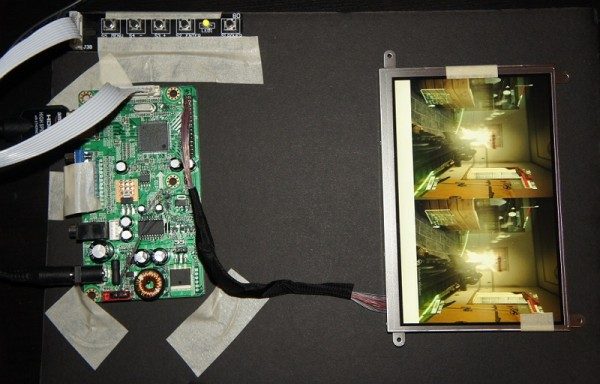

Today electronics manufacturer Sharp announced that the company is beginning production on 5-inch full 1080p LCD displays. The company mentions that the panels are for smartphone use but they could also be ideal for the Oculus Rift consumer version (Oculus Rift 2.0) which is expected in 2013. Currently the Oculus Rift developer version uses a 4″ panel with a 1280×800 resolution. The display is split down the middle, affording an effective resolution of 640×800 to each eye. Oculus knows that this is too low a resolution for eventual consumer adoption and is sourcing higher resolution panels for that purpose. Sharp’s new display could be ideal.
Achieving small high density panels is not the biggest hurdle to producing a high resolution Oculus Rift 2.0, rather, being able to buy such panels at reasonable prices is the challenge. Thanks to the smartphone industry, panel density has increased rapidly and compact high resolution displays are being produced in quantities large enough to be affordable. It is a fortunate coincidence for those interested in virtual reality head mounted displays that one of the most expensive components in an HMD is subject to constant improvement and high levels of production thanks to a separate industry.
At 5 inches, I’d say that these panels are way too big for smartphones, yet they could be a perfect for the Oculus Rift consumer version (Oculus Rift 2.0). With a 1920×1080 panel the effective resolution would increase by 102.5%, from 640×800 to 960×1080, over the Oculus Rift developer version.
Sharp says that production of these new panels started at the end of September and that production will ramp up to full-scale in October. Pricing information hasn’t been released, but if Sharp intends for these displays to be used in consumer smartphones then they must be relatively affordable.
Resolution isn’t the only important factor for an HMD display. Response time and input lag are also very important. Response time indicates how quickly pixels can change colors — a quick response time means less ghosting which is important for fast-moving images that are common in gaming. Minimal input lag is also essential because headtracking requires extremely low latency to stay synced with the video. Ultra-low latency for headtracking allows virtual reality games to feel natural and immersive. Sharp has yet to publish such details but they should be available soon.
Sharp will demonstrate the new panels over the next week at CEATEC Japan 2012. You can also expect to see the panels incorporated into consumer products during the Consumer Electronics Show in January.
Oculus LLC has yet to reveal much official information regarding the Oculus Rift consumer version (Oculus Rift 2.0), but the company hopes to increase both field-of-view and resolution over the developer version.
